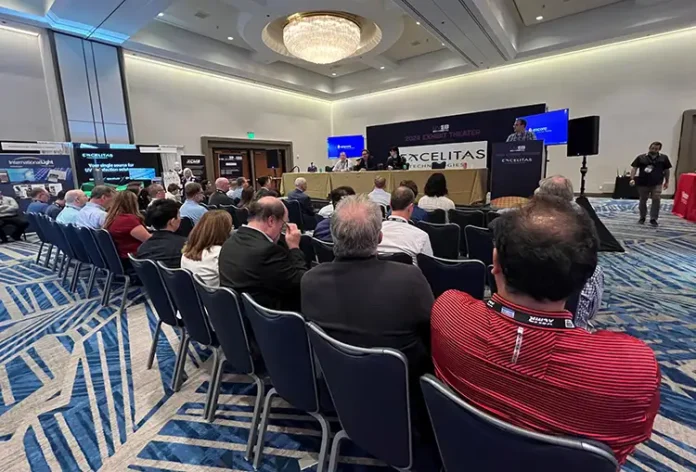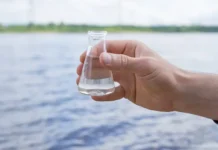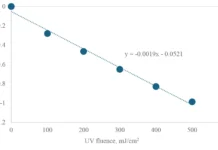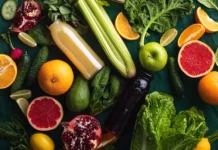IUVA One Water
Izzy Medeiros, MS Student, Civil and Environmental Engineering, University of New Hampshire, izzy.medeiros@unh.edu
James P. Malley Jr., Ph.D., editor-in-chief, UV Solutions and Professor of Civil and Environmental Engineering, University of New Hampshire, jim.malley@unh.edu
Two recent events have enabled UV water-related content and presentations to educate the industry.
Exciting UV Water-Related Presentations at the 2024 IUVA Americas Conference
The IUVA Americas Conference, co-located with RadTech 2024, took place May 20-22, 2024, in Orlando, Florida. Keep abreast of these 30 relevant research presentations and other developments on the IUVA website (www.iuva.org) and in UV Solutions magazine:
- WRF 5173: Regulatory Engagement on the Feasibility of UV LED Implementation in Municipal Disinfection Applications. Gary Hunter, Black & Veatch
- Bench and Full-Scale Comparison of Low-Pressure UV and UV LED for Inactivation of Legionella in Groundwater. Ariel Atkinson, Southern Nevada Water Authority
- Assessment of a 100 gpm, 280 nm UV LED Reactor for Full-Scale Disinfection Use in a Wastewater Facility in Atlantic Canada. Sean MacIsaac, Dalhousie University
- The Current State of UV Piloting. Molly McManus, Intuitech
- Dose-Pacing at Pilot Scale: UV LEDs for Indirect Potable Reuse. Tara Randall, HDR
- Research and Calibration of Bench-Scale High-Efficiency Flow-Through Devices for UV LEDs. Jay Li, Dalhousie University
- Challenges and Solutions Demonstrating High-Level Disinfection for Reuse Applications. Traci Brooks, Carollo Engineers
- Treatment of Wastewater Effluents Using Nanofiltration and Low-Pressure UV Treatment to Produce High Quality Water That Can Be Reused for Irrigation. Vanessa Pereira, iBET.
- Opportunities and Challenges for AOP for Inland Potable Reuse. Bryan Liu, Garver
- The World’s Largest UV AOP System and UV AOP Performance Metrics on the Horizon. Anthony Pimentel, Black & Veatch
- Standard Protocol for Measuring Hydroxyl Radical Scavenging by the Water Matrix for UV/H2O2 Advanced Oxidation. Olya Keen, University of North Carolina – Charlotte
- Application and Considerations of UV Sensors in Full-Scale UV-C LED System Monitoring. Rich Simons, Ph.D., AquiSense Technologies
- Theoretical Aspects of Using the Combined Variable Approach for Validation of Small UV LED Reactors. Yuri Lawryshyn, University of Toronto
- Near Complete Defluorination of Perfluoroalkyl Substances (PFAS) Using a Novel Chemical-Free Vacuum Ultraviolet Photolysis System. Haizhou Liu, University of California, Riverside
- Exploring the Photolytic Efficiency of Per- and Polyfluoroalkyl Substances (PFAS) Using an Enhanced Xenon Excimer VUV Lamp (172 nm). Eman Z. Alhamdan, Clemson University
- Wastewater Treatment Using an Indigenous Plasma DBD Based 222 nm Far UV-C Excimer Lamp. Kiran Ahlawat, Indian Institute of Technology Jodhpur
- Monitoring the Dynamic Influent Water Quality of UV/Cl2 AOP Systems: Challenges and Solutions for JEA’s H2.0 Purification Center. Bryan Townsend, Black & Veatch
- Impact of UV Wavelengths in Engineered Water Treatment on Human Health Relevant Microbiomes Including Antibiotic Resistant Bacteria and Opportunistic. Yijing Liu, The Ohio State University
- Investigating the Efficacy of Combined UV LED Wavelengths in a Flow-Through Reactor for E. coli Inactivation. Hadas Mamane, Tel Aviv University
- Optimizing OH Radical Scavenging Potential Measurement. Fateme Mohamadi, University of Manitoba
- Translation of Outcomes from WRF5050 Into Reactor Design and Control Strategies for the UV/HOCl AOP. Uwe Hübner, Xylem Services
- Evaluating Materials for Post UV/H2O2 AOP Quenching of Hydrogen Peroxide. Kingsley Okenwa John, CEE, University of North Carolina
- Enhancing Contaminant Degradation Using Low Wavelength-Driven Advanced Oxidation in Water Treatment. Bryan Liu, University of Colorado Boulder
- Barriers and Deployment of UV LED Technology in Municipal Water and Wastewater Applications: Case Studies. Oliver Lawal, AquiSense Technologies
- UV LED Disinfection Systems: Effective, Superior and Competitive Only if They Are Designed Well. Babak Adeli, Acuva Technologies Inc.
- LED Dechlorination System. Eduardo Pérez de Caso, Instapura
- Considerations for Implementing UV Disinfection Technologies in Rural Areas. Hadas Mamane, Tel Aviv University
- Solutions Design by UV4Good: UV-C LED-Based Mobile Water Treatment Units for Crisis Water Disinfection. Tatiana Koutchma, Agriculture and Agri-Food Canada
- Characterizing Lifetime and Reliability of UV-C LEDs and the Resulting Water Disinfection Systems. Rajul Randive, Crystal IS
- A Custom Photooxidation Solution for Industrial VOC Reduction. Karl Sparenberg, Excelitas Noblelight
UV Applications to Water Happening at 2024 AWWA Conference and Exposition
The 2024 American Water Works Association Annual Conference and Exposition (ACE24), June 10-13, 2024, in Anaheim, California, featured The Water Research Foundation Research Highlight (THU01): Advancements and Applications of UV LED Technology for Water Treatment. The session offered an exploration of three ongoing WRF research endeavors focused on assessing the practicality and potential impact of utilizing ultraviolet light emitting diode (UV LED) technology in water treatment. The primary focus of this session was to evaluate the feasibility of integrating UV LED systems within water treatment processes. This involved analyzing the effectiveness of UV LED irradiation in mitigating Legionella, reducing biofilm formation and enhancing water quality. Three projects were presented.
- Municipal Applications of UV LED Disinfection for Five Locations Across North America Using the UV Auditing Approach for Assessing (WRF 5173). Sean MacIsaac, Dalhousie University. This presentation covers a portion of WRF Project #5173, in which the feasibility of UV LED disinfection is investigated at several magnitudes of flow. UV auditing was conducted on several source waters from across North America to assess UV LED disinfection efficacy across the UV-C spectrum. Several challenge organisms were used as biodosimetry probes for 254, 265 and 280 nm wavelengths of germicidal light, which provide a clear picture of how LED technologies compare to conventional systems. Additionally, a 10 GPM, 280 nm LED pilot system was evaluated at a utility over the course of several months and sampled to capture a range of influent water qualities and highlights the disinfection treatment flexibility that UV LED disinfection provides.
- Inactivation of Biofilm-bound Opportunistic Pathogens in Premise Plumbing Using UVC LEDs. Karl G. Kinden, University of Colorado Boulder
- Inactivation of Amoeba-Internalized Legionella Pneumophila by UV LED and Multi-Barrier Approaches (WRF 5218). Ariel Atkinson, Southern Nevada Water Authority
Several other presentations planned for ACE24 also discussed “one-water” facilities that include UV disinfection and warrant attention. As of this writing, the program for the International Water Association World Water Congress and Exposition (WWCE 24), August 11-15, 2024, in Toronto, Ontario, Canada, has not been finalized. Stay tuned to IUVA and UV Solutions for future updates on the exciting topic of UV technologies applied to “One Water.”






